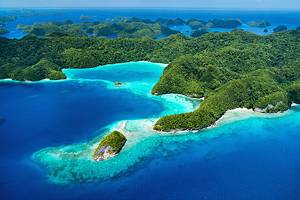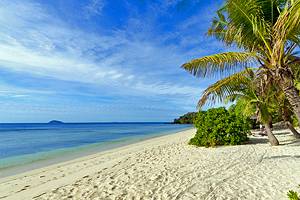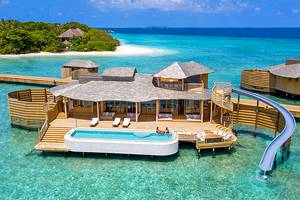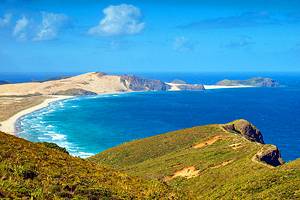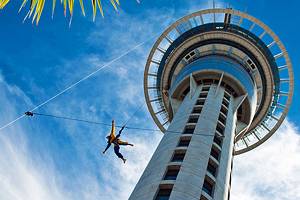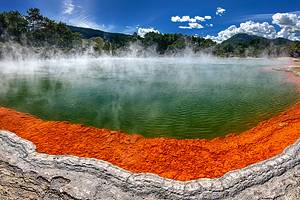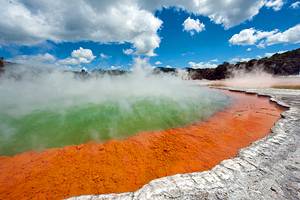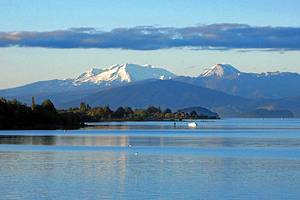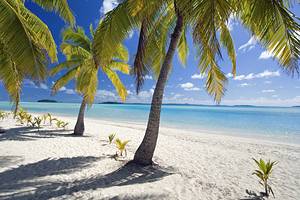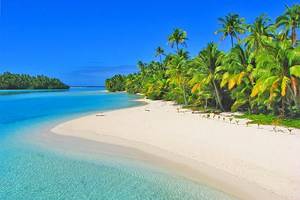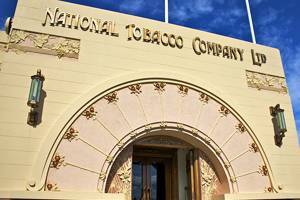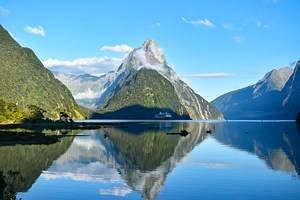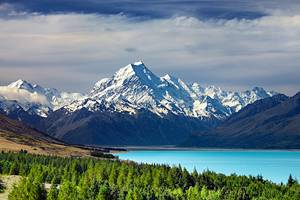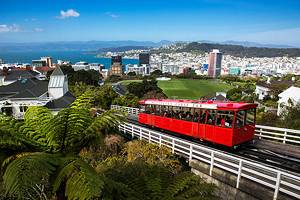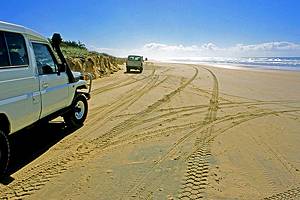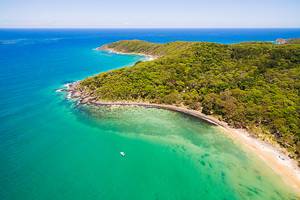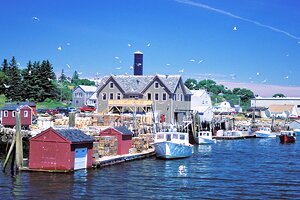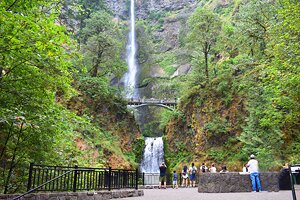17 Top-Rated Tourist Attractions in Fiji
Author Karen Hastings has been visiting Fiji for more than three decades. She was married here, and has since returned many times with her family.
Famous for its friendly people and heavenly tropical islands, Fiji is the quintessential South Pacific paradise. With more than 300 islands to choose from, you'll find plenty of rewarding things to do.
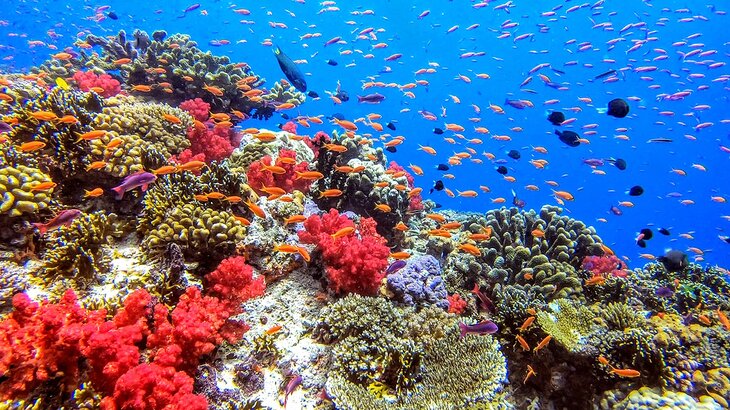
Viti Levu: Suva, on the largest island of Viti Levu, is the capital. Nadi, on the western side of the island, is Fiji's main international gateway and lies near the large resorts of the Coral Coast and Denarau Island. Not far from here, you can stroll along sand dunes to ancient archeological sites, soak in therapeutic mud pools and hot springs, dive with sharks in Beqa Lagoon, and raft the Upper Navua River through pristine rainforests.
Outer Islands: The outer islands have their own alluring natural attractions. The Mamanuca Islands are home to one of the world's top surf breaks, and in other island groups, you'll find mystical caves, Fiji's only UNESCO World Heritage Site, and the world's fourth largest barrier reef.
Fiji also has great accommodation options, from family focused resorts to all-inclusive resorts. Fijians also love children, so this is a great destination for families.
For ideas on the best places to visit in this idyllic island paradise, read our list of the top attractions in Fiji.
- 1. Blue Lagoon Cruise: Mamanuca and Yasawa Islands
- 2. Denarau Island
- 3. Kula Wild Adventure Park, Viti Levu
- 4. Beqa Lagoon, Viti Levu
- 5. Navua River, Viti Levu
- 6. Garden of the Sleeping Giant and Sabeto Hot Springs, Viti Levu
- 7. Pacific Harbour, Viti Levu
- 8. Great Astrolabe Reef, Kadavu
- 9. Cloudbreak, Mamanuca Islands
- 10. Natadola Beach, Viti Levu
- 11. Sri Siva Subramaniya Temple, Nadi
- 12. Sunset Dinner Cruise to Robinson Crusoe Island
- 13. Sigatoka Sand Dunes National Park, Viti Levu
- 14. Fiji Museum, Viti Levu
- 15. Levuka, Ovalau
- 16. Bouma National Heritage Park, Taveuni Island
- 17. Sawa-i-Lau Caves, Yasawa Islands
- Fiji - Climate Chart
- Map of Fiji - Top-Rated Tourist Attractions
1. Blue Lagoon Cruise: Mamanuca and Yasawa Islands
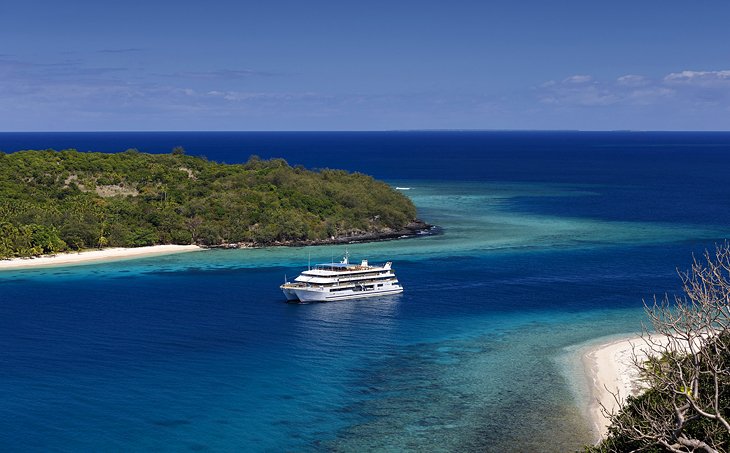
If you want to sample several of Fiji's best islands on your holiday, a Blue Lagoon Cruise is a great option. These intimate 68-passenger cruises offer a choice of three different itineraries in the picture-postcard Yasawa and Mamanuca Islands. This company offers an adults-only experience, making it a truly romantic experience for couples. If you're traveling with kids, though, you should look elsewhere.
You can choose from three-, four-, or seven-night cruises. All have flexible itineraries that are subject to change, depending on the weather and local festivities. Daily schedules incorporate a maximum of four hours of cruising each day, so you can spend most of your time sightseeing around the islands.
Activities include swimming, diving, and snorkeling in the silky waters; picnics on uninhabited islands; fishing; and visiting local villages and attractions, like the Sawa i lau Caves. Cruises depart from Port Denarau.
The Yasawa Flyer also offers daily voyages through the Yasawas from Denarau Marina.
2. Denarau Island
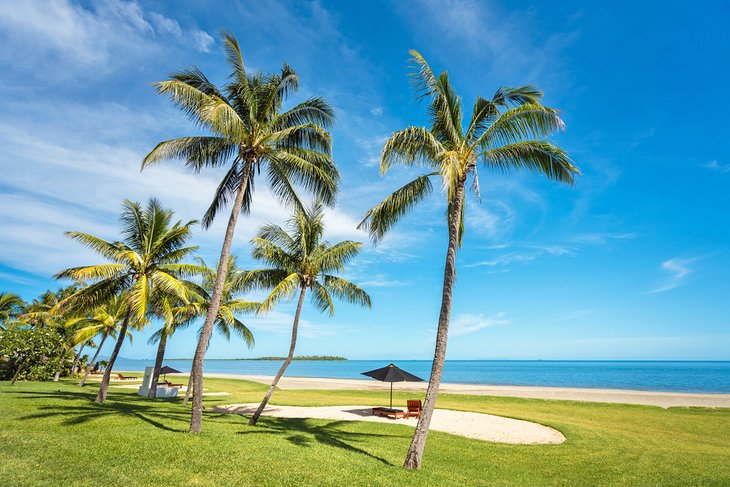
Are you craving a shopping fix, a hearty meal, a game of golf, or a pampering spa treatment? You can do all this and more on a visit to Denarau Island. This tourist hot spot is a one-stop hub for shopping, dining, and Fiji entertainment, about 20 minutes from Nadi's international airport.
If your main goal is to stock up on souvenirs, you'll find everything here, from the ubiquitous wooden cava bowls and colorful Fijian sarongs to jewelry, surf wear, and shell knick-knacks.
Feeling peckish? Choose from different 40 restaurants, serving everything from pizza and American-style burgers to Fijjian food and Indian cuisine. Before or after you dine, you can also catch some free entertainment. Every evening between 6:30 and 7:30, fire dancers light up the outdoor area, and Polynesian and Melanesian dancers add another welcome dash of Fijjian culture.
Port Denarau Marina here is the launching point for a range of tours and activities. Snorkeling, sailing, jet skiing - you can book it all here. The marina is also the departure point for cruises to other islands, like the Mamanuca and Yasawa chain.
Golfers can tee off at the palm-studded 18-hole course, with mesmerizing views of the sea, and if your muscles are sore after a round or two, book a relaxing massage at the spa.
If you're wondering where to stay in Fiji, Port Denarau is also home to nine hotels and resorts, including the Sheraton Denarau Villas and the Hilton Fiji Beach Resort & Spa.
Getting around is easy, too. The handy Bula Bus will whisk you from your Denarau Island resort to all the shopping, dining, and entertainment areas.
3. Kula Wild Adventure Park, Viti Levu
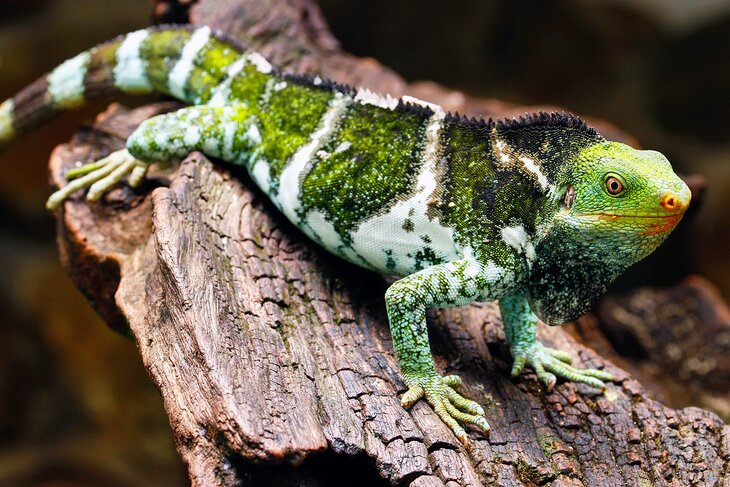
Looking for a mix of nature and adventure? Head to Kula Wild Adventure Park in Sigatoka. Here, you can hold the rare Fijian crested iguana, capture close-up images of Fiji's beautiful native birds, and learn about captive breeding programs for some of the country's endangered species.
Wooden boardwalks thread through more than 12 acres of forest along the valley floor and canopy, where you can see tropical plants; lizards; snakes; and native birds, including doves, parrots, and waterbirds. Marine exhibits house tropical fish, colorful soft coral, and sea turtles. If you time it right, you can even hand-feed baby sea turtles.
If you prefer more of an adrenaline buzz, take a ride through the forest on the Roller Coaster Zip Rail or zoom down one of the waterslides. Splash pools also tempt younger visitors on hot days.
This is a fun place to visit for critter-loving kids and adults alike.
4. Beqa Lagoon, Viti Levu
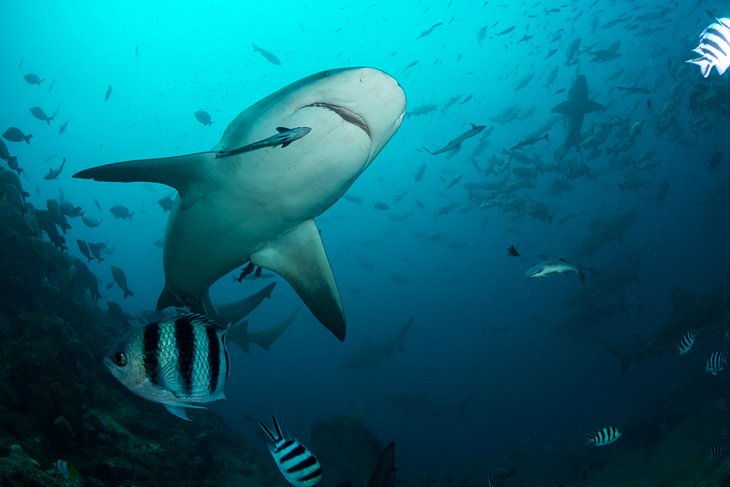
About 144 kilometers southeast of Nadi, off Pacific Harbour, Beqa (pronounced "Benga") Lagoon lures avid divers and adventure seekers, many of whom come here to experience the Beqa Lagoon Shark Dive.
With stringent safety measures in place, expert local dive operators offer exhilarating face-to-face encounters with these much-feared creatures in their natural habitat. Among the many species you can see are bull sharks, whitetip, blacktip reef sharks, and even tiger sharks.
If you're looking for a more subdued underwater experience, the lagoon is home to more than 100 dive sites. Coral bommies, pinnacles, and wrecks showcase an impressive diversity of soft corals and tropical fish, and most sites are in relatively shallow waters not far from shore. This is a great place to dive if you're visiting Viti Levu and don't have time to travel to reefs around the smaller islands.
Beqa Island, just offshore, is home to the Sawau tribe, who started the famous Fiji tradition of fire walking, and you can still watch this centuries-old tradition at ceremonies in nearby resorts.
5. Navua River, Viti Levu
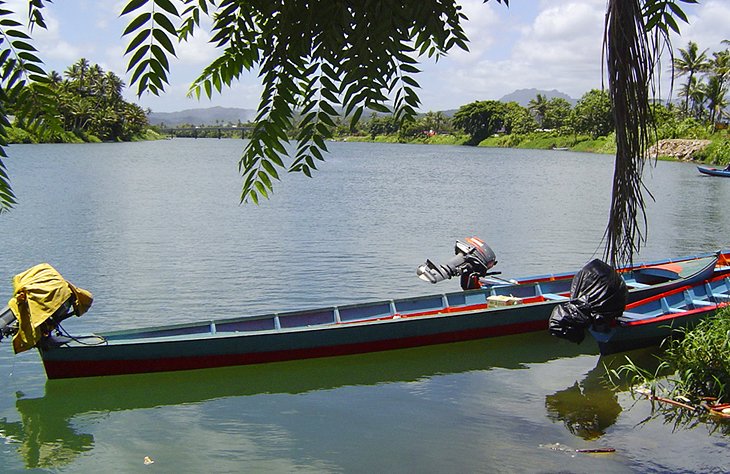
The Navua River on Viti Levu flows for 65 kilometers from the Viti Levu highlands to the south coast through magnificent scenery, with lush rainforests, waterfalls, and rugged canyons.
You can paddle the Upper Navua River in kayaks or canoes, float along on a bilibili (bamboo raft), or ride the whitewater rapids (Grade II to Grade III) on an inflatable raft.
Wildlife such as fruit bats, herons, and native parrots are often spotted along the way, and you can combine a river experience with cultural tours to local villages and participate in traditional kava ceremonies.
This tangled, tropical wilderness offers a taste of the real Fiji — especially if you are based at one of the manicured resorts of the Coral Coast, Denarau Island, and Pacific Harbour.
6. Garden of the Sleeping Giant and Sabeto Hot Springs, Viti Levu
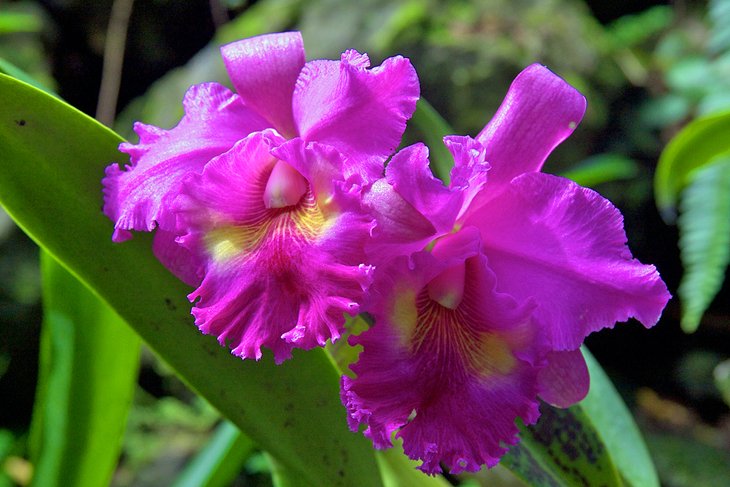
Less than 30 minutes by car from Nadi, snuggled in the lush foothills of their namesake mountain peak, the Garden of the Sleeping Giant is a rewarding day trip — especially if you're a green thumb.
Once the private collection of the late actor Raymond Burr of Perry Mason fame, these gorgeous gardens spotlight more than 2,000 species of orchids, as well as a tranquil lily pond replete with tadpoles and frogs.
You can explore the gardens on covered boardwalks that wind through 20 hectares of lawns and native forest. Swings and hammocks invite you to linger and enjoy the peace and serenity of this verdant valley, and free guided tours share fascinating details on the history of the gardens.
After admiring all the botanical beauties, visit the nearby Sabeto Hot Springs and Mud Pool. Here, you can indulge in one of the more unusual things to do in Fiji: a slimy, yet strangely soothing, mud bath. Don't worry — after coating your body in mud, you can clean off with a soak in the mineral pools and enjoy a relaxing massage.
7. Pacific Harbour, Viti Levu
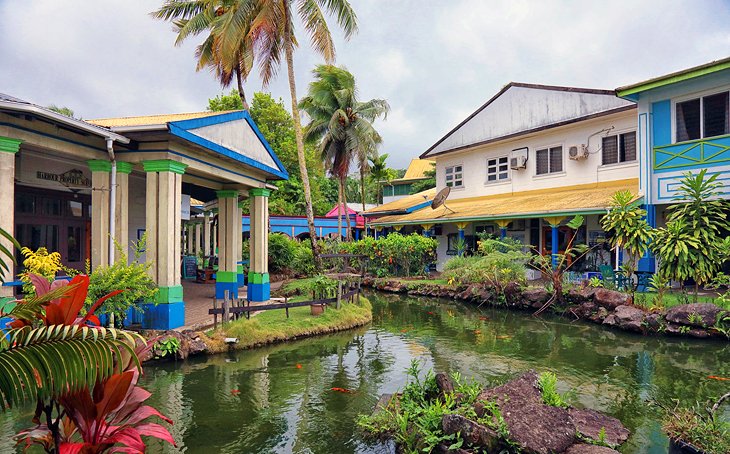
Less than 50 kilometers from Suva, Pacific Harbour is the self-proclaimed "Adventure Capital of Fiji." This upscale enclave of vacation homes and resorts began its life as a residential canal development in the 1970s, and today, it's evolving into a hot spot for adrenaline sports.
Popular things to do here include river rafting on the nearby Upper Navua River, ziplining, jet skiing, surfing, 4WD adventures, and a heart-pumping dive with bull sharks in Beqa Lagoon.
If you prefer more low-key activities, Pacific Harbour is also home to a popular arts village with restaurants, souvenir stalls, and cultural shows.
Accommodation options range from budget hostels to luxury resorts, and the brand new Pacific Palm Marina is underway, with restaurants, upscale residences, a golf course, and spa.
About 20 minutes by car from Pacific Harbour, Kila Eco Adventure Park offers ziplining, ropes courses, and nature walks.
8. Great Astrolabe Reef, Kadavu
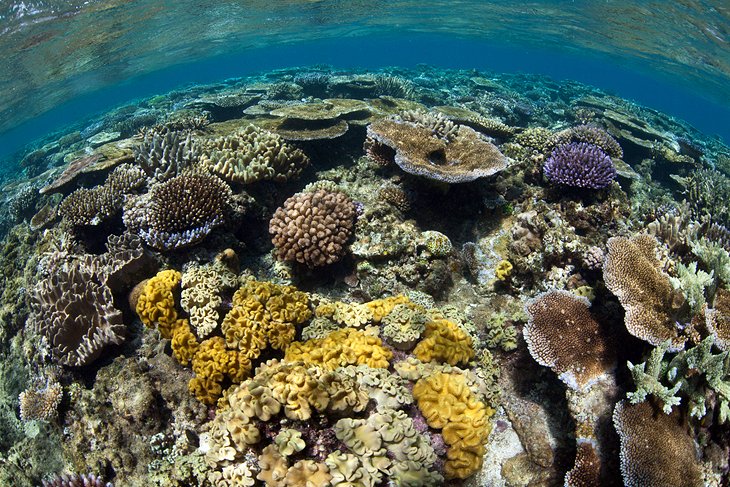
Fringing Fiji's fourth largest island, Kadavu, and other small islands in the Kadavu group, the 100-kilometer-long Great Astrolabe Reef is the fourth largest barrier reef in the world.
Divers come here to submerge themselves in an underwater wonderland of caverns, tunnels, pinnacles, drop-offs, kaleidoscopic hard and soft corals, and tropical fish.
Most of the dive sites are easily accessible by boat from the southern shores of Kadavu, the currents are typically moderate, and visibility ranges from 10 to 40 meters. The dives cover all skill levels, from beginner to advanced. Snorkelers can also enjoy the rich marine life here and the chance to swim with manta rays.
Anglers can fish in designated areas — the reef is known for its abundance of billfish species, as well as tuna, mahi mahi, and giant trevally.
9. Cloudbreak, Mamanuca Islands
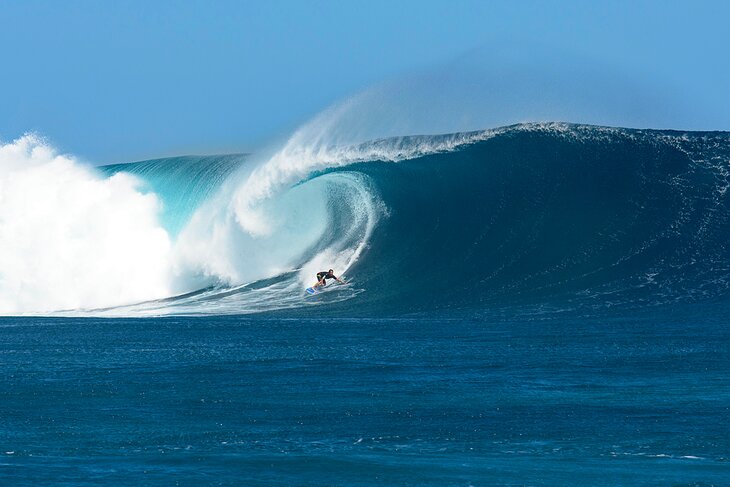
Frequently gracing the list of the world's best and most challenging waves for surfers, Cloudbreak lies on a sheltered reef about two kilometers from Tavarua Island Resort, near Namotu Island Resort, in the Mamanuca Islands.
This internationally renowned left reef break speeds up as it barrels over a shallow reef, dumping a massive volume of water, and it's surfable during all tides. Depending on conditions, waves vary in height from two to 20 feet, and access is usually via a Jet Ski and tow board.
Not surprisingly, the wave is best attempted by expert surfers only. In 2016, Hawaiian surfer Aaron Gold almost drowned riding this break.
The best swell comes from the south/southwest, thanks to the eastern trade winds, which typically blow between March and October.
Tavarua and nearby islands offer access to eight main surf breaks, including Swimming Pools, Tavarua Rights, and Namotu Left.
Besides Tavarua and Namotu, other resorts that offer access to Cloudbreak include Funky Fish Beach Resort; Plantation Island Resort; and the ultimate couples' resort, the adults-only Lomani Island Resort.
10. Natadola Beach, Viti Levu
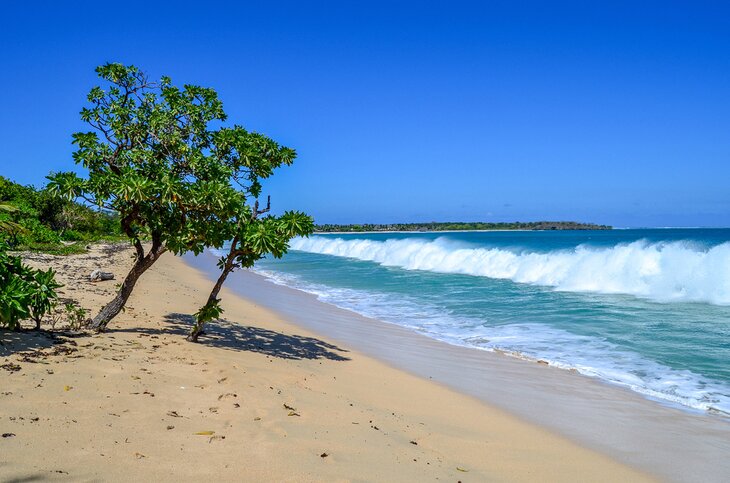
Located on the main island of Viti Levu, Natadola Beach has been repeatedly voted one of the best beaches in Fiji. This accolade is well earned due to its soft, cream-colored sand and numerous shade-giving palms.
There are plenty of activities to enjoy at this beautiful beach. From snorkeling to horseback riding to just plain beachin, you won't be bored. Those who like to surf are in luck. The rough water at this popular beach offers up optimal conditions for riding the waves.
That said, the surf here can be quite strong, so if you're traveling with children, be sure to hold on tight and beware of the undertow.
11. Sri Siva Subramaniya Temple, Nadi
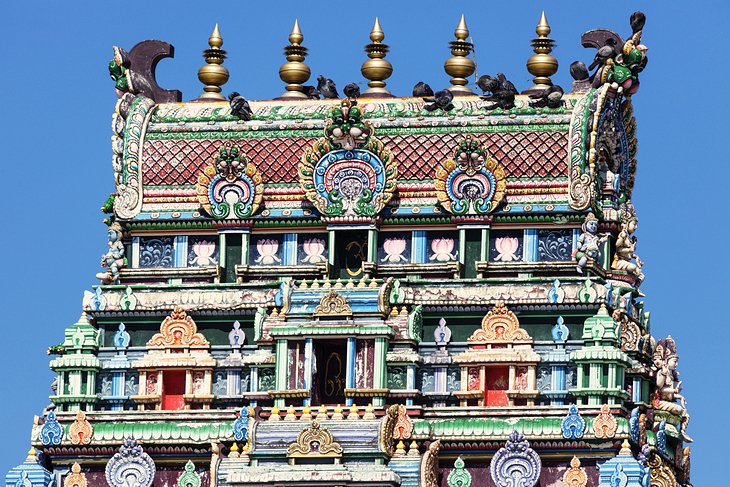
One of the top tourist attractions in Nadi, the rainbow-hued Sri Siva Subramaniya Temple is the largest Hindu temple in the Southern Hemisphere and draws a steady stream of devotees, as well as tourists who come here to admire the impressive Dravidian architecture.
Artists traveled from India to paint the temple and work on its colorful ceiling frescoes. The temple is dedicated to the God Mungan, depicted by the wooden statue from India housed in the main temple.
Be sure to follow the dress code when visiting here, (cover up and take your shoes off), and note that photographs are off limits once you enter.
12. Sunset Dinner Cruise to Robinson Crusoe Island
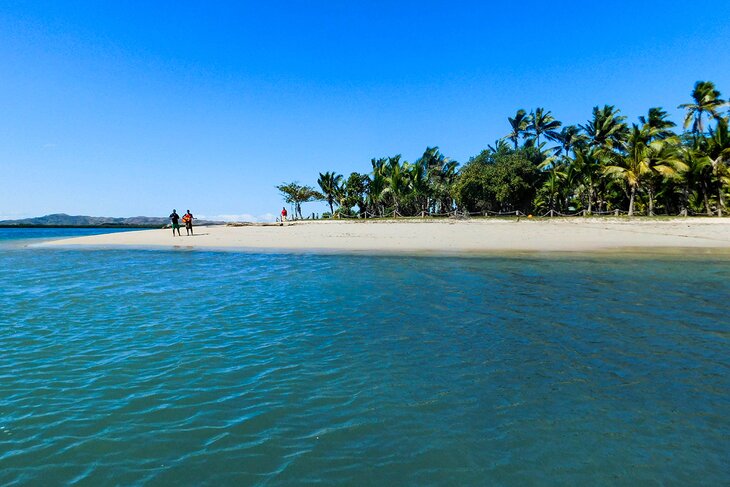
There's something extra special about visiting a private, secluded island. When that isle is called Robinson Crusoe Island, you can rest assured you'll have an experience to remember. This remote beauty boasts a soft sandy beach, multiple water sports, and a relaxing vibe that can't be beat.
If you want to stay longer, no problem. The exclusive Likuri Island Resort welcomes families and couples alike to enjoy the relaxing facilities in this romantic island paradise. But you'll have to find your own way home the next day.
13. Sigatoka Sand Dunes National Park, Viti Levu
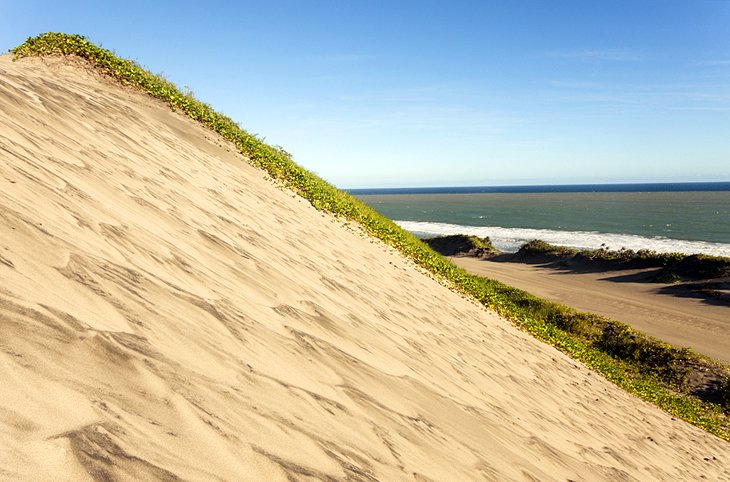
About 60 kilometers south of Nadi, Sigatoka Sand Dunes National Park was the country's first national park, established to protect this fragile ecosystem of coastal dunes near the mouth of the Sigatoka River.
Formed over thousands of years, the dunes range in height from 20 to 60 meters, with breathtaking views of the surf from the highest peaks.
To explore the park, you can choose from two self-guided walks: a one-hour walk through a forest to the beach or a two-hour walk along the ridgeline. Highlights include visiting the archaeological sites to see ancient Lapita artifacts, including more than two-thousand-year-old pottery, stone tools, and one of the biggest burial sites in the Pacific.
Bird-watching is also popular, and the small visitor center displays some interesting artifacts found at the site, as well as information about its history and ecology.
14. Fiji Museum, Viti Levu
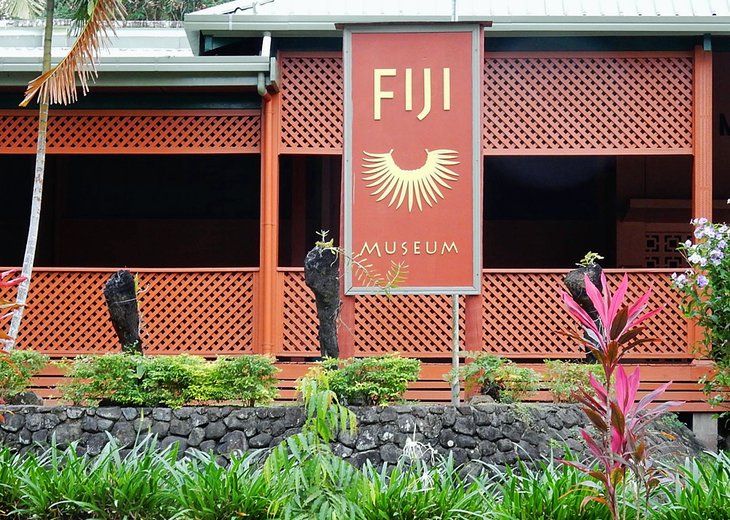
You can learn all about Fiji's fascinating culture and history at the small Fiji Museum in central Suva, set within Thurston Gardens. An hour or two here will give you a good overview of the country's history and culture.
Exhibits cover the culture of the Indigenous Fijians, British colonial history, the influence of the country's large Indian population, and Fiji's natural history.
In the maritime exhibits, double-hulled Fijian canoes and a bilibili (bamboo raft) are on display, as well as the rudder from the HMS Bounty. Other highlights include exhibits on the practice of cannibalism, shards of pottery found at the Sigatoka Dunes archeological sites, and works by contemporary Fijian artists.
After admiring all the exhibits, you can relax with a picnic under the palms and fig trees in the surrounding botanical gardens. The museum is currently undergoing a major renovation with plans to reopen "soon." In the meantime, their office, gift shop, and library are open from 8am to 4:30pm.
15. Levuka, Ovalau
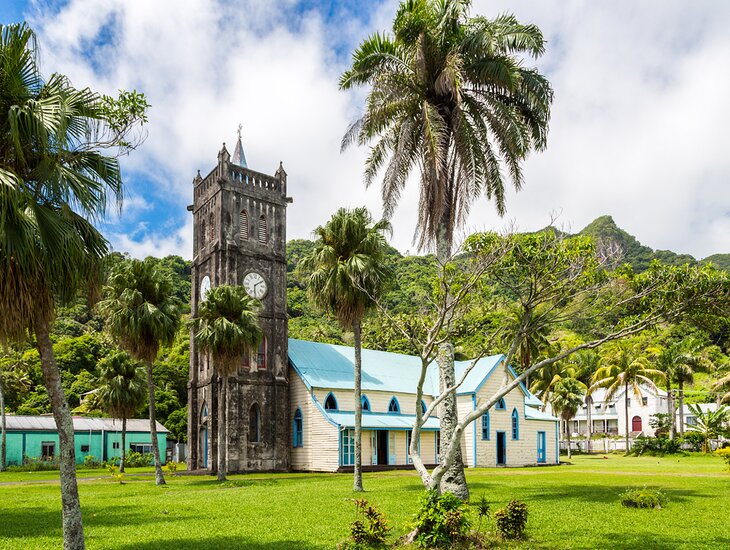
Fiji's only UNESCO World Heritage Site, Levuka is the capital of Ovalau, the main island of the Lomaiviti group, and it was also the first colonial capital of Fiji. This is where the first Europeans settled in the early 19th century, and its historic center, with old wooden buildings, achieved World Heritage status in 2013.
Today, the town is not a thriving tourist destination, rather, it's a quaint window into old Fiji, nestled amid mango trees and coconut palms.
Highlights include the Royal Hotel, opened in the 1860s and still operating today as the oldest hotel in the South Pacific; Sacred Heart Cathedral and Presbytery from the 1860s; and the Morris Hedstrom bond store.
Most visitors to Levuka organize homestays with the locals and linger a while to soak up the laid-back ambience of this friendly town.
16. Bouma National Heritage Park, Taveuni Island
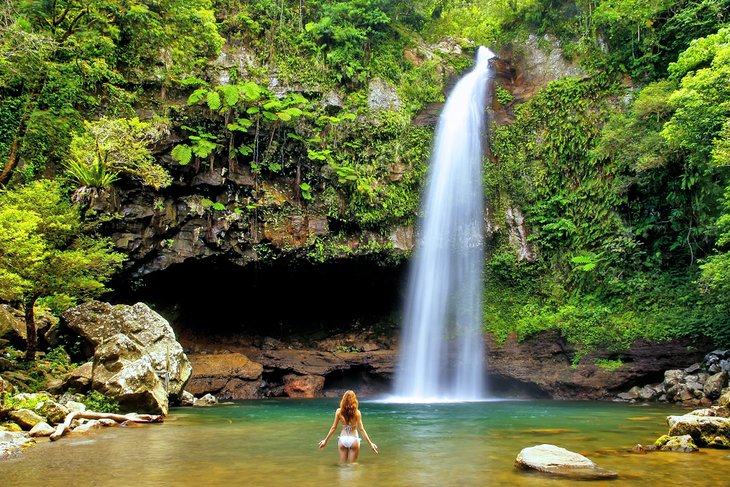
Nature lovers, hikers, and birders can soak up some of Fiji's lush natural beauty in Bouma National Heritage Park on the island of Taveuni.
Established in 1990, the park encompasses about 150 square kilometers of rainforest, with rare tropical plants and an impressive diversity of birds, as well as four villages that are each responsible for managing portions of the park.
You can snorkel in the marine park at Waitabu; hike through the rainforest to ancient ruins near Vidawa; and kayak or stroll the Lavena Coastal Walk, stopping at waterfalls for a swim along the way.
A particular highlight of the park are the Tavoro Waterfalls, with three sets of falls maintained by the nearby Korovou village, where you can swim in the cool volcanic pools and capture photos of the veil-like streams of water gushing down the rockfaces.
The park is also home to Lake Tagimaucia, a crater lake, where the rare Tagimaucia flower blooms, and De Voeux Peak, which offers spectacular views from its 1,195-meter summit.
17. Sawa-i-Lau Caves, Yasawa Islands
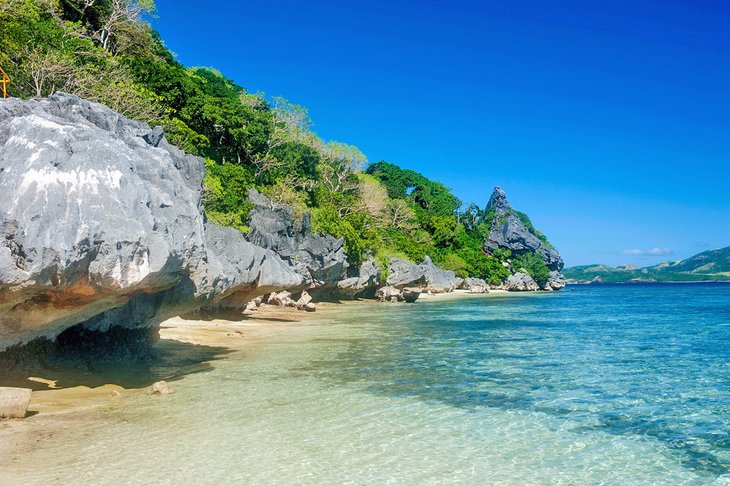
In the northern Yasawa Islands, the mystical Sawa-i-Lau Caves were sculpted by wind and waves over thousands of years. They are famous as the site of scenes from the famous Brooke Shields movie, The Blue Lagoon.
Bathed in light, the first limestone cavern is easy to access, and you can swim in the cool, crystal-clear water of the deep pool and admire the interesting limestone formations.
To access the inner cave, you have to swim through an underwater tunnel. Locals believe that this inner cavern is the heart of the Yasawas, and that the caves are the final resting place of the 10-headed Fijian God, Ulutini.
Note that the second cave is only accessible when the tide allows. Guides are highly recommended.
Fiji - Climate Chart
| Average minimum and maximum temperatures for Suva, Fiji in °C | |||||||||||
| J | F | M | A | M | J | J | A | S | O | N | D |
| 30 23 | 30 23 | 30 23 | 29 23 | 28 22 | 27 21 | 26 20 | 26 20 | 27 21 | 27 21 | 28 22 | 29 23 |
| PlanetWare.com | |||||||||||
| Average monthly precipitation totals for Suva, Fiji in mm. | |||||||||||
| 290 | 272 | 368 | 310 | 257 | 170 | 125 | 211 | 196 | 211 | 249 | 318 |
| Average minimum and maximum temperatures for Suva, Fiji in °F | |||||||||||
| J | F | M | A | M | J | J | A | S | O | N | D |
| 86 74 | 86 74 | 86 74 | 84 73 | 82 71 | 80 69 | 79 68 | 79 68 | 80 69 | 81 70 | 83 71 | 85 73 |
| PlanetWare.com | |||||||||||
| Average monthly precipitation totals for Suva, Fiji in inches. | |||||||||||
| 11 | 11 | 15 | 12 | 10 | 6.7 | 4.9 | 8.3 | 7.7 | 8.3 | 9.8 | 13 |


